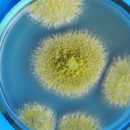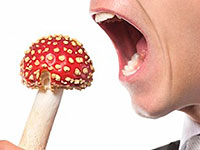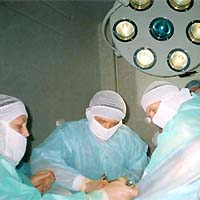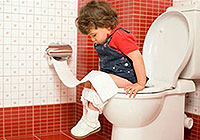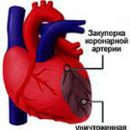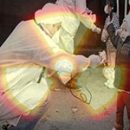What is the history of Siberian ulcers? What is a Siberian ulcer? What are the symptoms of Siberian ulcers? How to prevent Siberian ulcers? Answers to these questions you will find in the article.
Content
From the history of Siberian ulcers
In 1941. On one of the islands at the northern shores of Scotland
(Riert) wide scales were experimed by the English army for infection
Siberian ulcer sheep so that «work out» The process of defeat
Bacteriological weapons. After many years, according to English
Journalist Robert Harris, on this island «Simple scratch
may cost a person life». On the assumption of scientists the island will
infected by the disputes of Siberian ulcers to 500 years.
In the Russian Federation in recent years has sharply complicated
Situation in Siberian Pazve. Annually, people's disease are registered
In 11-13 provinces. Infection occurs when leaving for sick animals,
slaughter, cutting carcasses, when contacting the corpse of the victim from Siberian ulcers
Animal infected with the causative agent of soil, animal husbandry products,
Livestock raw materials and objects made from it. Pathogen
penetrates the human body through microtraums of the skin or exterior mucous membranes
Shell. Known cases of food infection (when used
infected products from meat), transussively (through blind bits) and
Air-dust through the processing of dry animal raw materials
(leather, hair, bristles, bones, etc.). The main way of infection of animals
- Food (through feed and water).
Contamination of people of Siberian ulcers are usually associated with unauthorized
Forced residential homes, use in food purchased
from the hands of meat and meat products, with the treatment of infected wool, skins and others.
Raw.
What is a Siberian ulcer
Siberian ulcer - especially dangerous infectious disease
animals and people known since the time of hippocrat. Already in those days
assumed that pets can be a source of infection for
man. Susceptible to Siberian ulcers first of all herbivores
Animals: Large and finely horned cattle, horses, deer, camels. but,
Her predators and omnivorous (pigs) can get sick.
Disease pathogen - Siberia Bacillus (Bacillus Anthracis)
There is in 2 forms: a vegetative, founding in the body of patients
or those who died from the Siberian ulcers of people and animals, and spore - out of animals
Organisms. Sick animals distinguish the microbes of Siberian ulcers with urine,
feet, bleeding, which in the air turn into disputes.
These are extremely stable forms: preserving vitality after
10-minute boiling; Under the action of dry heat at 120 - 140 degrees
they die only after 1 - 3 hours, in the autoclave at 130 degrees - through
40 minutes; 1% solution of formalin and 10% solution of caustic soda kill them
For 2 hours. Contaminated by the siberiane disputes of the grounds and others
Objects of the external environment for a long time are the reservoir and factors
Transferring pathogen infection. Derived from sick animal raw materials
(wool, skins, bristles and others.) and the objects made from it preserve
Epidemiological Danger for many years. In the soil, the pathogen
Siberian ulcers can not only be maintained for many decades, but when
certain favorable conditions are able to multiply.
Great epidemiological danger represent old
Soil foci - cattle bisks, where in their time were buried
corpses of animals killed from Siberian ulcers. These cattle bisks, even
many decades later, during the production of earthworks can cause
Flash of the disease among people and animals.
Manifestation of Siberian ulcers
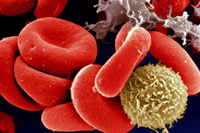
Siberian ulcer people appear in the form of localized
(skin) and generalized forms. Skin form usually amazed
Open areas of the body, mucous membranes of the eyes, oral cavity, nose.
After the incubation period, duration of several hours
up to 8 days, in the place of deployment of the causative agent appears dense, itchy
Red spot, on the site of which the bubble filled with yellow
or dark liquid, after opening the bubble, a ulcer is formed, filled
serous-hemorrhagic exdate. On the silent edges of ulcers arise «Daughter bubbles», which, passing the same stages of development, through
5 - 6 days lead to the formation of a sybiced carbuncule. Characteristic
The symptom is an extensive painless swelling of tissues, an increase in adjacent
To the carbunch and remote lymph nodes. From the 2nd week in place
Carbuncoula begins to form black stamp, rising above the surface
leather, after the rejection of which the formation of scar tissue.
The disease is accompanied by an increase in body temperature to 39 - 41 degrees
Within 5 - 7 days, the appearance of symptoms of general intoxication.
Generalized
(septic) form of Siberian ulcers can be a complication of localized
(skin) process, and with air-dust and food paths of infection
There is a primary. The disease begins sharply with general intoxication phenomena
(fever, headache, weakness, multiple vomiting), with defeat
lymphatic system and internal organs. The disease proceeds so
hard with 100% mortality. With timely handling medical
The treatment of the skin form of the Siberian ulcers ends effectively.
In the Vologda region the last case of people's disease
and agricultural animals of the Siberian ulcer registered in 1980.
In the Vologda district. An unfavorable epizootic situation in Russia
does not exclude the likelihood of transportation of Siberian ulcers into the region
With animal feeds, farm animals, animal husbandry products
And raw materials. However, the greatest danger represents the resumption of activity
old soil foci of Siberian ulcers. According to reference data in
The Vologda region registered more than 550 points, stationary
disadvantaged in Siberian ulcers in whose territory there were cases
animal diseases, and more than 150 places of burial fallen from Siberian
Cattle ulcers. Currently accurate locations
Only 89 siberiated cattle bisos. In a number of areas of cattleochilnics
are threatened with disappearance due to non-fulfillment by the authorities
local self-government requirements for ensuring epidemiological
Safety of their contents (sample, designation, designation
sign).
Prevention of Siberian ulcers
The prevention of diseases of the Siberian ulcer of people and animals lies
Strict adherence to sanitary and veterinary rules for the prevention and control of infectious diseases,
common to humans and animals, including control over the content of cattleochlorians,
livestock facilities, compliance with veterinary and sanitary rules
In case of harvesting, storage, transportation and processing of raw animal
Origin, for carrying out all land management works.
It must be borne in mind that diseases are not vaccinated
animals may occur in any location where it is in stationary
Dysfunctional in Siberian Points. Scientists found that the causative agent
Siberian ulcers can make even rainworms on the surface of the earth.
Danger of infection increases when conducting work related to moving
Soil, with soil erosions with thaws or rainwater. Therefore, paramount
The task of prevention is timely immunization against Siberian
Agricultural animal ulcers (including private
owners) in stationary disadvantaged points. Grafs are subject to
and persons relating to groups of elevated «Risk» infection
Siberian ulcer.
The population should be known that the mandatory measure of prevention
Siberian ulcers are preventing use of animal meat
forced slaughter without resolution of veterinary and sanitary supervision. DANGER
For eating meat and meat products (especially brought
from other territories) not having a quality certificate. Persons caring
For animals, must comply with personal hygiene rules. At the smallest
suspicion of Siberian ulcers need to immediately apply for medical
help.

